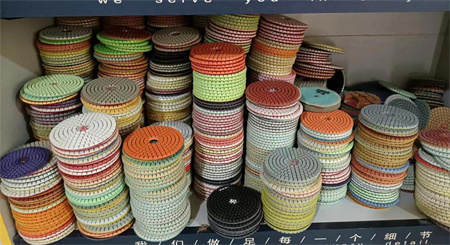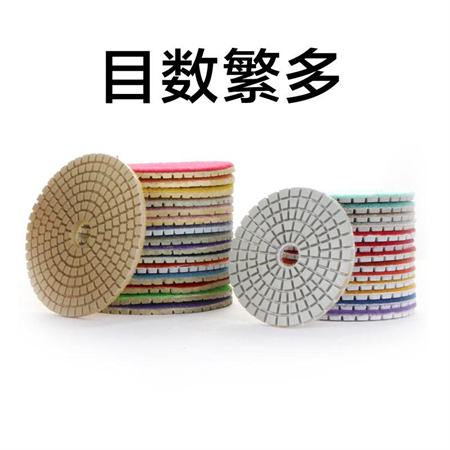Trends in Stone Polishing for the Middle Eastern Market
The Middle Eastern market has always been synonymous with luxury, opulence, and architectural grandeur. As construction and design continue to evolve in the region, so too does the demand for high-quality materials that blend tradition with modern innovation. Stone, revered for its timeless beauty and durability, remains at the heart of many of the region’s most iconic structures. Stone polishing, a critical step in bringing out the natural luster and elegance of these materials, is experiencing a shift driven by both technological advancements and changing consumer preferences.
In recent years, the Middle East has witnessed a noticeable increase in the demand for stone polishing services, largely driven by the growing construction boom. Cities like Dubai, Abu Dhabi, Doha, and Riyadh are brimming with projects that require refined and sophisticated finishes for residential, commercial, and public spaces. However, it’s not just the volume of demand that is increasing; the complexity and expectations surrounding the stone polishing process are evolving as well.
Sustainability and Eco-Conscious Practices
One of the most prominent trends in the stone polishing industry today is the shift towards sustainability. As the Middle East grapples with environmental concerns and strives to meet green building standards, there is a growing push for eco-friendly materials and processes. Traditional polishing methods that rely on harmful chemicals and produce excessive waste are being replaced by more sustainable alternatives. Water-based polishing solutions, for instance, have gained significant traction in the region, offering a safer and more environmentally responsible option for stone treatment.


Technology is transforming every aspect of our lives, and stone polishing is no exception. High-tech equipment and automated systems are reshaping how stones are processed and finished. Computer Numerical Control (CNC) machines, for example, have become integral to the stone polishing industry. These machines allow for unparalleled precision and consistency, enabling artisans to create intricate designs and flawless surfaces with greater efficiency.
Moreover, laser technology has also entered the stone polishing world. Lasers are used to enhance the texture and sheen of stones, creating unique finishes that are impossible to achieve through conventional methods. Laser polishing also allows for better control over the process, reducing the risk of damaging the stone surface while producing a finer, more uniform result.
The emphasis on high-tech polishing methods speaks to the region’s demand for perfection and sophistication. Stone finishes in the Middle East are expected to meet the highest standards, especially in luxury real estate developments, where every detail matters. Architects and designers are now working closely with stone polishing specialists to achieve custom finishes that reflect the distinctiveness of their projects.
Trendy Stone Materials and Finishes
When it comes to the types of stone being polished, the Middle East has seen a shift toward more exotic and luxurious materials. While marble, granite, and limestone remain popular choices, materials like onyx, travertine, and quartzite are making their way into contemporary designs. Onyx, with its striking veining and translucent quality, has become particularly favored in high-end interior designs, often used for backlit wall panels or luxurious countertops. Its delicate appearance requires specialized polishing techniques to preserve its integrity while bringing out its unique colors and patterns.

Cultural Influence and Traditional Techniques
Despite the increasing reliance on modern technology, traditional techniques continue to influence the stone polishing process in the Middle East. The region’s rich history of craftsmanship, from intricate tilework to stone carvings, ensures that artisans still play a key role in the polishing of stones. In fact, some of the most prestigious projects in the region rely on a fusion of traditional and contemporary methods to achieve their desired results.
The demand for hand-polished stone is still strong in certain circles, particularly in high-end boutique projects and restorations of historical sites. These techniques require patience and expertise, as artisans carefully hone the surface of the stone by hand, ensuring that each piece is perfectly smooth and aesthetically pleasing. This meticulous approach can be time-consuming, but for clients seeking authenticity and bespoke finishes, the results are worth the effort.
The Future of Stone Polishing in the Middle East
As the Middle Eastern market continues to evolve, the stone polishing industry will undoubtedly continue to adapt and innovate. The growing emphasis on sustainability, the adoption of cutting-edge technology, and the increased demand for diverse and customized finishes are just the beginning. With a focus on craftsmanship, quality, and sophistication, stone polishing will remain a vital component of the region’s architectural landscape for years to come.
Whether through eco-friendly practices, technological advancements, or the blending of old-world techniques with modern innovations, the future of stone polishing in the Middle East is bright. As the region continues to build iconic structures that reflect both its rich heritage and its forward-thinking approach to design, polished stone will remain a symbol of beauty, elegance, and enduring quality.